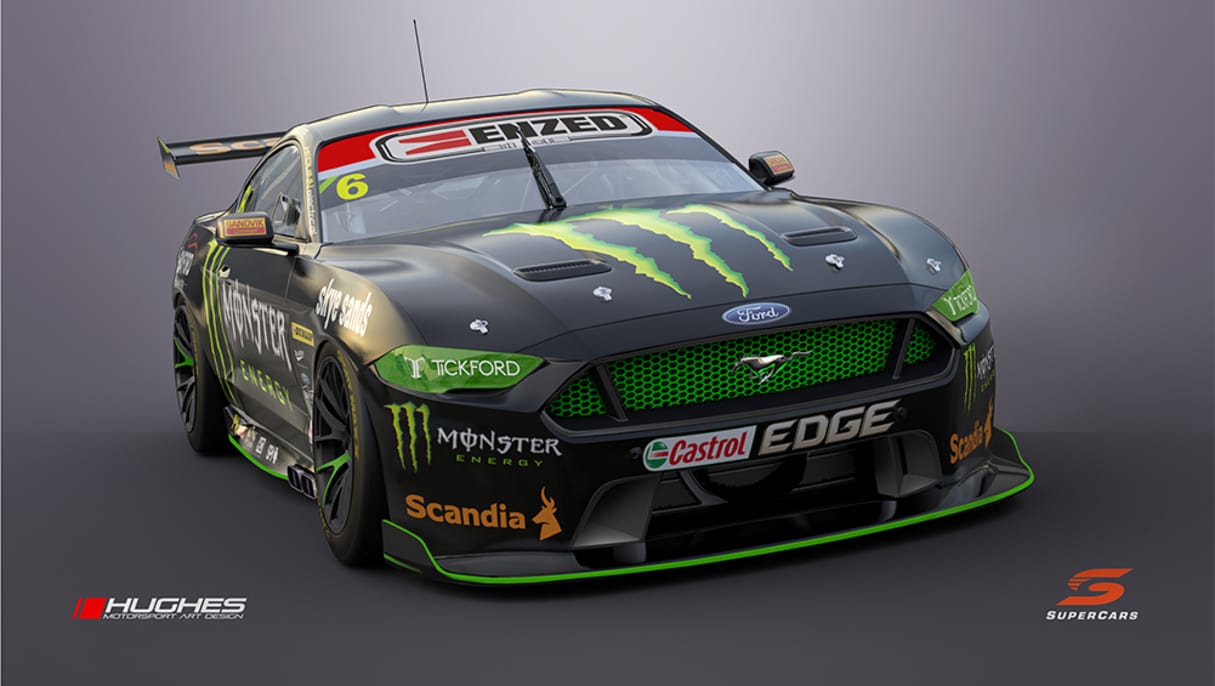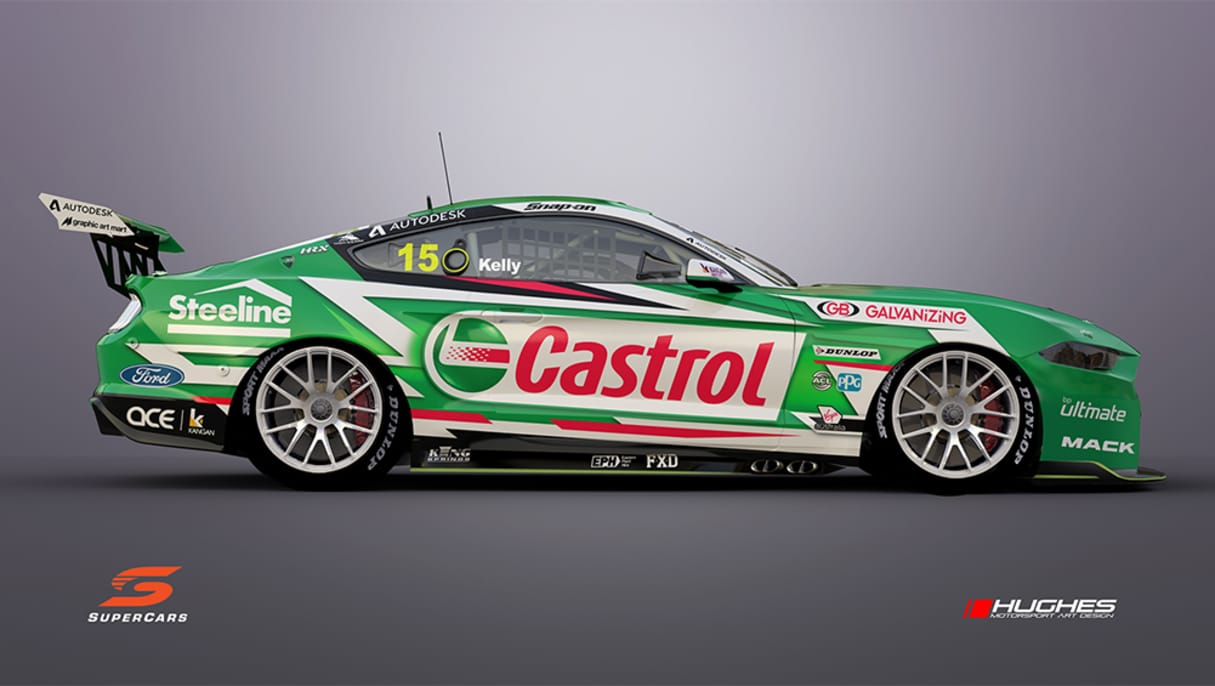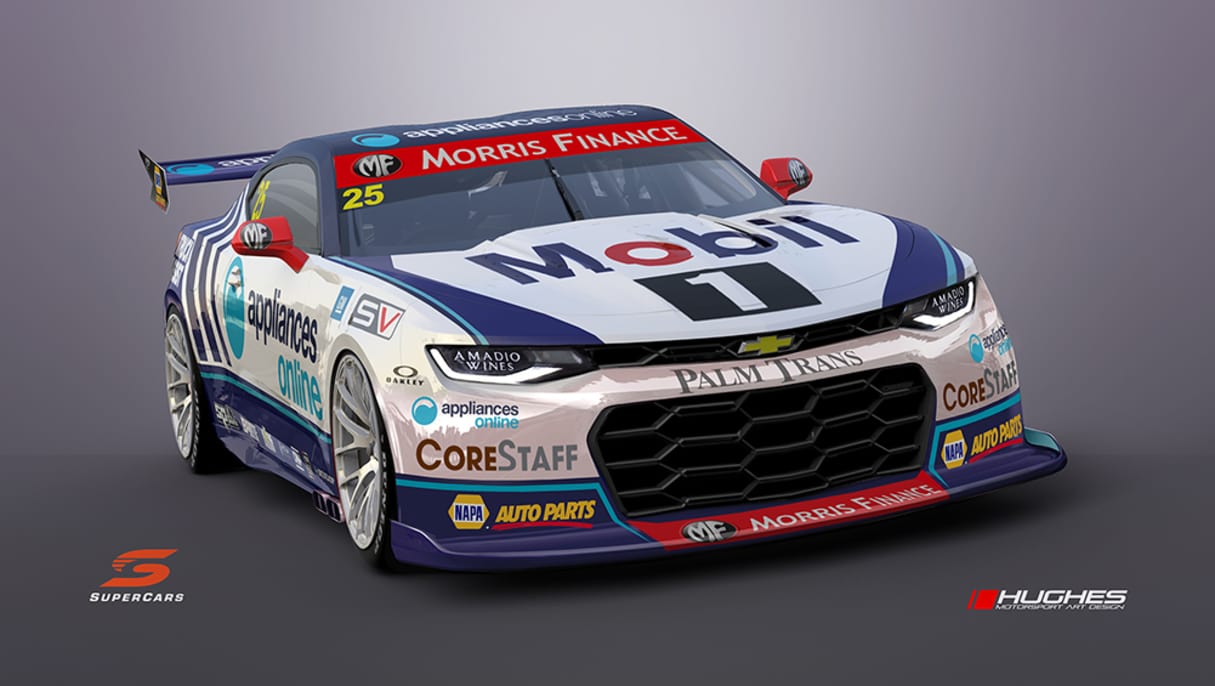The Supercars championship will enter a new era in 2022 - in more ways than one. A new generation of cars are set to join the sport, and at the same time new ownership is expected to further alter the way the series is run.
Gone will be Holden and the venerable Commodore, which has raced in V8 Supercars and its predecessor, the Australian Touring Car Championship, since 1980. Instead ,the Chevrolet Camaro will join the grid, as General Motors Specialty Vehicles (GMSV) looks to establish itself as Holden’s replacement both on and off the track.
This is arguably the biggest change to the series since 1993, when rule makers ditched the global ‘Group A’ regulations in favour of the home-grown V8-powered Commodores and Ford Falcons. There are some big ambitions for these new rules - cheaper cars, more relevance to what we can buy in the showroom and closer action on track.
Here’s all the key V8 Supercar news you need to know to bring you up to speed on this new generation of cars.
Why is it called Supercars Gen3?
V8 Supercars began in 1997, taking over as the Australian Touring Car Championship but maintaining its ‘Group 3A’ rules for 5.0-litre V8-powered Holdens and Fords. These same basic rules continued until 2012 when the sport introduced the ‘Car of the Future’ - a new set of regulations that was designed to save costs by adding more commonality between the cars. In retrospect this became ‘Gen1’ and saw the introduction of new cars from Nissan (Altima), Volvo (S60) and Mercedes-AMG (E63).
Gen2 rules were introduced in 2017 that allowed for coupe body styles (clearing the way for the Mustang to replace the defunct Falcon) as well as the option of turbocharged four- or six-cylinder engines (despite Holden testing a twin-turbo V6 the project was scrapped in favour of sticking with the 5.0-litre V8).
The Gen3 rules were announced at the 2020 Bathurst 1000, with a plan to try and open the sport to new manufacturers and different types of cars in the wake of Holden’s closure and Ford scaling back its racing involvement.
What cars will be racing in 2021?

The two confirmed cars for 2022 will be the Chevrolet Camaro and Ford Mustang.
Even though the Camaro isn’t sold in Australia, GMSV is supporting the introduction of the car, as it will help promote the Chevrolet brand as it introduces the Corvette and Silverado 1500 into the local market.
Most teams have already confirmed which car they’ll be racing already.
The Camaros are expected to be run by Triple Eight, Brad Jones Racing, Erebus Motorsport, Team 18, Team Sydney and Walkinshaw Andretti United.
The Mustang teams will likely be Dick Johnson Racing, Grove Racing, Tickford Racing, Blanchard Racing Team and Matt Stone Racing.
Will they be more like road cars?
.jpg)
Yes, that’s the plan. Supercars has listened to criticism that the cars have become too far removed from their road-going equivalents. In particular, the current Mustang has been labelled a ‘sports sedan’ because its body had to be modified awkwardly to fit over the mandated Gen2 roll-cage.
The Gen3 rules call for cars that will be lower and wider, to better look like the Camaro and Mustang you see with numberplates. The goal is to have the majority of panels on the race car be identical in shape to the road car; although they will be built from composite material to save costs.
While they will still have large aerodynamic rear wings, both the Camaro and Mustang will now use a common wing. The idea of which is to save costs and cut downforce by approximately 200kg, which should make the cars more difficult to drive and help overtaking. Overall Supercars is aiming to cut downforce by more than 65 per cent, which should help make the cars look and drive more like road cars.
Will the Gen3 V8 Supercars be cheaper?

They sure hope so, but history has shown motor racing series have difficulty saving money at the expense of going faster. For example, ‘Car of the Future’ was meant to slash the cost of the cars to around $250,000, but to build a car under the current rules, you’ll need approximately $600,000.
The goal of Gen3 is to cut that back to $350,000, which will be difficult. For starters, the Gen2 cars cannot be converted to Gen3 specification, so all teams will have to start from scratch to build new cars. However, the long-term plan is to use more control parts across the car, which will stop teams from trying to outspend each other in a development war; as is the current case with items such as uprights and dampers.
By using more control parts, Supercars will also be able to not only make each component cheaper but also longer-lasting, which will cut servicing costs. One good example of this mindset change will be a change in spindle that fixes the wheel to the car. By reducing the size of the spindle, teams will be able to switch from expensive pneumatic rattle guns to cheaper electric rattle guns to remove the wheels during pit stops. The stated goal is to reduce operating costs by up to 40 per cent for the teams.
What engines will they use?
.jpg)
V8 Supercar engine specs are in for their biggest change yet, after nearly 30 years using 5.0-litre V8s, the sport will introduce new engines for 2022. The Camaros will be powered by a Chevrolet 5.7-litre V8, and the Mustangs will use a Ford 5.4-litre V8.
The engines will be based on ‘crate motors’ that utilise common parts available from the US auto giants that should help keep costs down but have been tailored to suit the series need for specific V8 Supercar engines.
The Chevrolet unit has already begun testing on track in a TA2 race car, with Triple Eight drivers Jamie Whincup and Shane van Gisbergen cutting laps.
Ford has also got a headstart with its Coyote-based engine, because it’s based on the same engine found in the back of the Brabham BT62 and built by the same company that has provided all of DJR’s engines during its recent dominant run, Mostech Race Engines.
The target is to cut power from approximately 485kW (650hp) to around 447kW (600hp) to slow the cars down and reduce the strain on the engines to save money.
While different in capacity, the plan is to equalise them for close competition. If that can’t be done by the local builders, Supercars has said it would call on racing specialists Ilmor, which has plenty of experience building NASCAR and Indycar engines, to create parity at its US facility.
Will Supercars Gen3 introduce hybrids?
Not yet, but the organizers say the regulations have been written up to accommodate hybrid powertrains in the future as more car makers transition to electrified models.
The hybrid system is likely to be an ‘off-the-shelf’ system from a specialist racing supplier, rather than relying on teams to develop their own expensive hybrid powertrains.
Will they use paddle-shift gearboxes?
.jpg)
Yes, despite protests from drivers, the sport looks set to swap its sequential gear lever for steering-wheel-mounted paddle shifters. While the drivers are unhappy, the move will make it easier to drive the cars, Supercars and some team owners believe the introduction of paddle-shift and an ‘auto-blip’ for down changes will reduce the risk of engine damage, therefore saving money.
Will any new manufacturers join?

Supercars is confident that a third manufacturer will join, and even hinted it would be a European brand. But, as we’ve previously reported, no obvious candidate has emerged to admit any interest in going racing against Chevrolet and Ford.
When will the Gen3 cars debut?
Due to a number of delays, some caused by the pandemic, Supercars decided to push back the introduction of the Gen3 cars until midway through the 2022 season. They are scheduled to debut at the race at Sydney Motorsport Park in August.
Supercars is hoping to have the first prototypes built by October to begin testing. That should allow the specifications to be signed off by early 2022, allowing teams to begin construction and individual testing ahead of its debut.
Are the V8 Supercar drivers happy with Gen3?

So far the drivers have been publicly positive about the majority of the changes, with the obvious exception of the paddle-shifters; which are near-universally disliked. The hope for most teams is that the new cars will allow for a resetting of the competitive order, and because racing drivers are competitive, they’re all confident they’ll do the best job.
Who owns Supercars?
At the time of publication, the company that controls the sport is owned by Archer Capital, but the firm is in the process of selling its stake to find new owners.
Current bidders for the sport include Australian Racing Group (owners/promoters of TCR Australia, S5000, Touring Car Masters and GT World Challenge), a consortium fronted by Boost Mobile owner Peter Adderton and backed by News Corp-owned rugby league club Brisbane Broncos and a consortium led by former driver Mark Skaife with TLA Worldwide talent agency.
The process is expected to be finished by the end of the year, which would leave the new owners responsible for introducing Gen3 in 2022.





.jpg)


.jpg)
.jpg)
.jpg)

.jpg)

.jpg)
_0.jpg)




.jpg)
.jpg)
.jpg)

.jpg)
.jpg)


.jpg)
